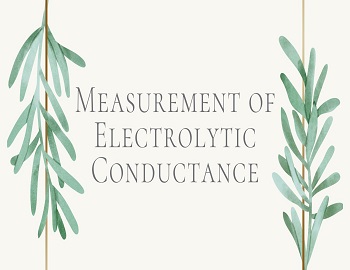Conductance:
According to Ohm’s law, ” the potential difference across the conductor is directly proportional to the current flowing through it”. Mathematically, V ∝ I, where ‘V’ is the potential difference in Volts and ‘I’ is the current in Amperes.
V = I x R, where ‘R’ is constant of proportionality known as Resistance of the conductor.
Resistance of any conductor is the obstruction to the flow of current and is directly proportional to the length (l) of the conductor and inversely proportional to its area of cross-section (a) i.e.
R ∝ l/a or R = ρ x l/a, where ρ (rho) is constant of proportionality known as specific resistance or resistivity.
Now, ρ = R x a/l
If l = 1 cm, a = 1 sq. cm, then ρ = R.
Thus, specific resistance is defined as “the resistance offered by a conductor of unit length and unit area of cross-section”. Its value depends upon the nature of the conductor. Its units are-
ρ = R x a/l = ohm x cm2/cm = ohm cm or Ω cm
The reciprocal of electrical resistance is known as “Conductance” and is a measure of the ease with which current flows through the conductor. It is denoted by C and C = 1/R.
Its units are Siemens (S) or ohm-1 or mho i.e. Ω-1.









Comments (No)